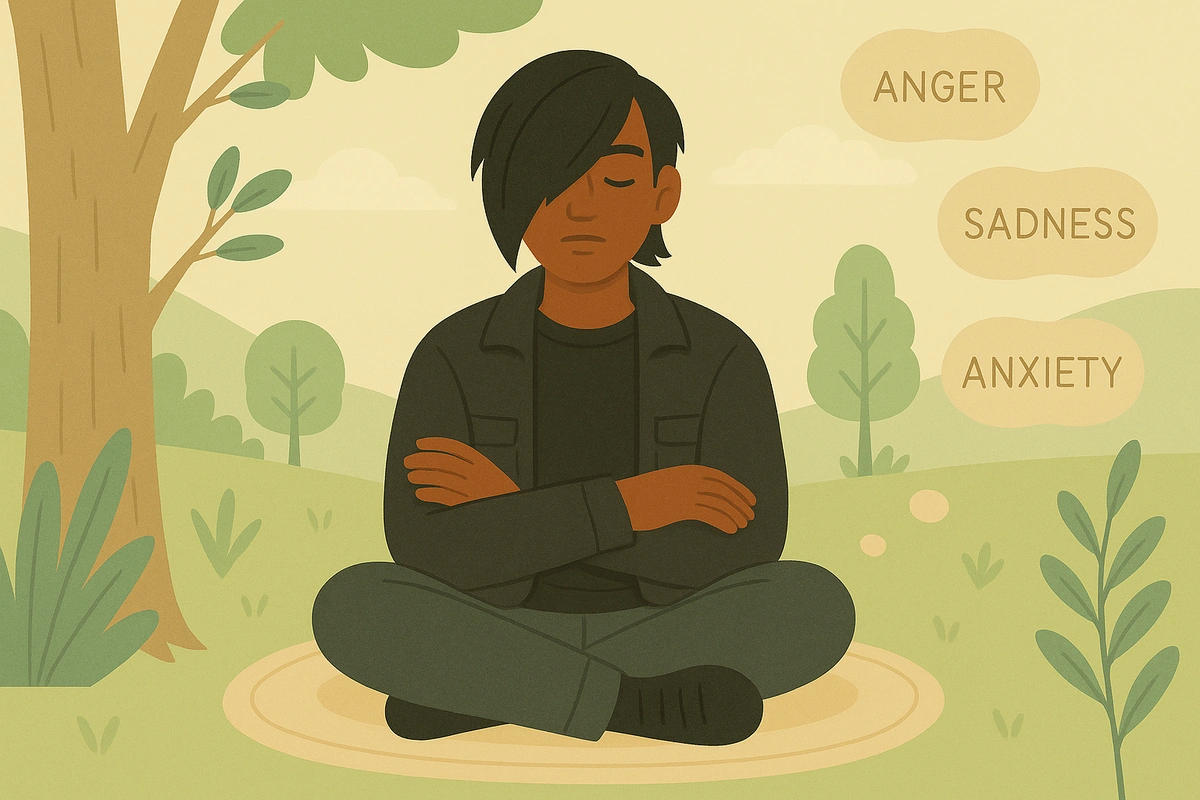Labeling experiences without judgment involves observing and naming emotions, thoughts, and sensations in a neutral, non-critical manner to enhance emotional regulation and reduce anxiety.

Labeling experiences without judgment is a mindfulness-based practice that involves observing and naming emotions, thoughts, and sensations in a neutral, non-critical manner. This technique, also known as affect labeling, helps create psychological distance from intense emotional experiences while fostering a more balanced and compassionate relationship with your inner world.
The practice works by engaging your prefrontal cortex - the brain's executive center - while calming the amygdala's emotional responses. Research demonstrates that simply putting feelings into words can significantly reduce emotional reactivity and physiological stress responses. This creates space between you and your emotions, allowing for more thoughtful responses rather than automatic reactions to challenging experiences.
Labeling experiences without judgment activates the prefrontal cortex while simultaneously reducing activity in the amygdala, the brain's emotional alarm center. This neurological shift creates what researchers call "implicit emotion regulation" - emotional calming that occurs naturally without conscious effort to control feelings.
Studies show that affect labeling produces measurable reductions in physiological stress responses, including decreased skin conductance and improved heart rate variability. This happens because naming emotions provides the brain with cognitive structure for processing emotional information, reducing uncertainty and perceived threat.
The practice works by interrupting automatic emotional reactivity patterns. When you label an emotion, you engage the brain's language centers, which compete with emotional processing areas for neural resources. This creates psychological distance from immediate emotional reactions, allowing space for more adaptive responses.
Additionally, research demonstrates that labeling emotions reduces the believability and emotional impact of distressing thoughts and feelings. The simple act of naming what you're experiencing helps the brain categorize it as a temporary mental event rather than an overwhelming reality that demands immediate action.
The non-judgmental aspect is crucial because self-acceptance reduces secondary emotional suffering - the additional distress we create by judging ourselves for having difficult emotions. This acceptance component breaks cycles of emotional reactivity and promotes psychological flexibility.
"I forget to label when emotions are intense" - This is normal when learning. Practice during milder emotional states to build the habit, and consider setting gentle reminders or cues.
"I don't know what to call my emotions" - Start with basic categories like "pleasant," "unpleasant," or "neutral," then gradually develop more specific vocabulary through practice and emotional awareness resources.
"Labeling makes me feel worse" - Ensure you're maintaining neutrality without adding judgment. If distress persists, consider working with a mental health professional familiar with mindfulness approaches.
"I start analyzing instead of just labeling" - Keep labels simple and brief. When you notice analysis beginning, gently return to basic naming without explanation or investigation.
"My emotions change too quickly to label" - This is actually good awareness. Simply label the changing nature itself with phrases like "shifting emotions" or "emotional flow."
"I don't feel anything to label" - Emotional numbness is also an experience worth noting. You might label this as "disconnection," "numbness," or simply "not feeling much right now."